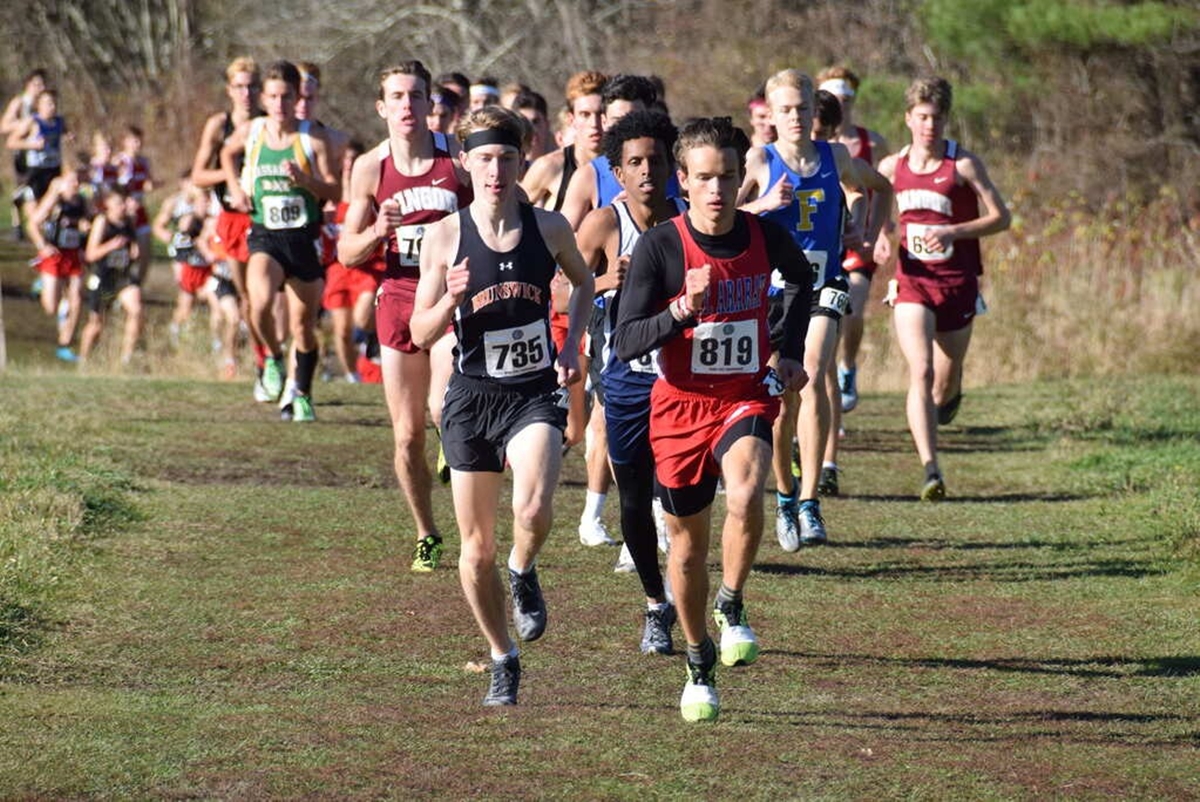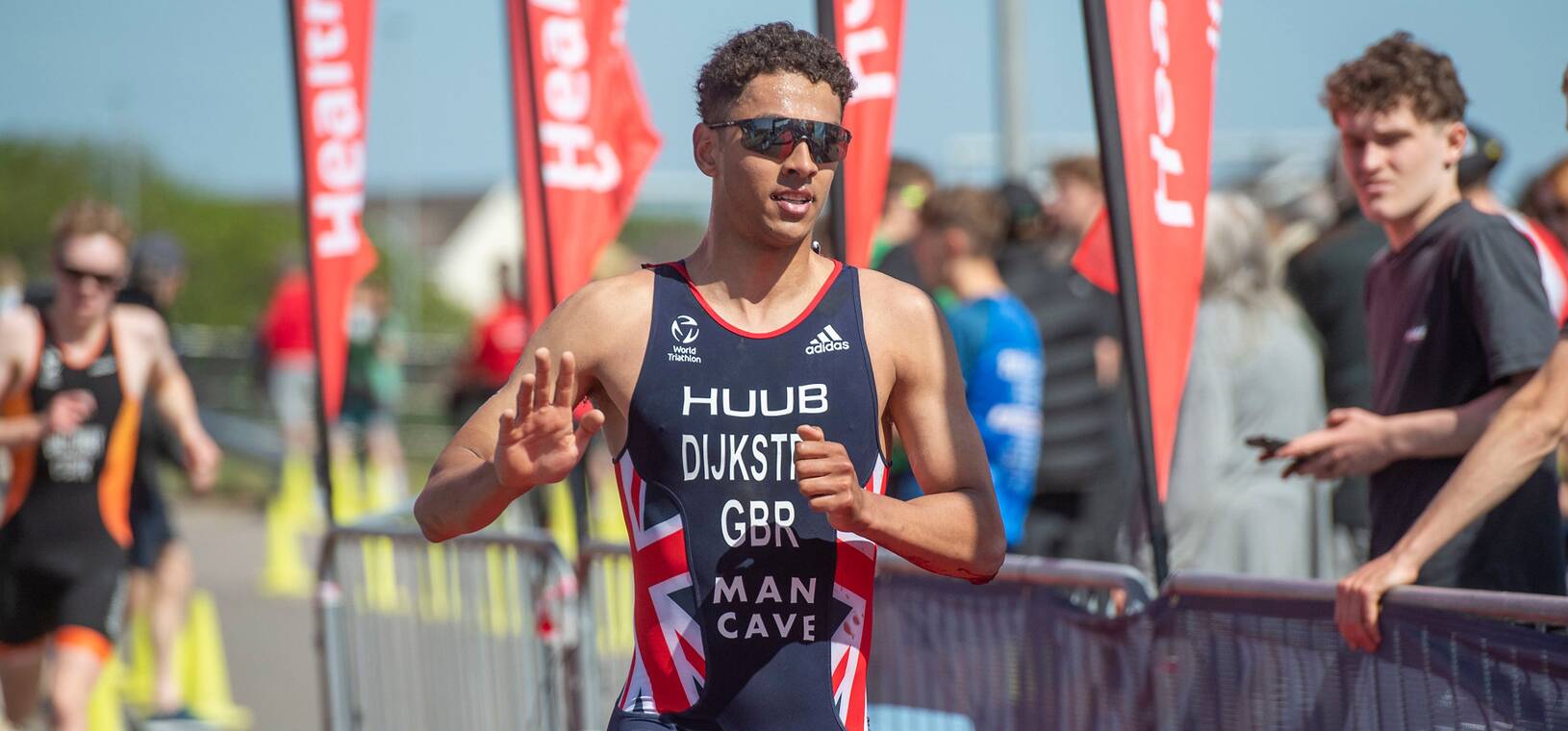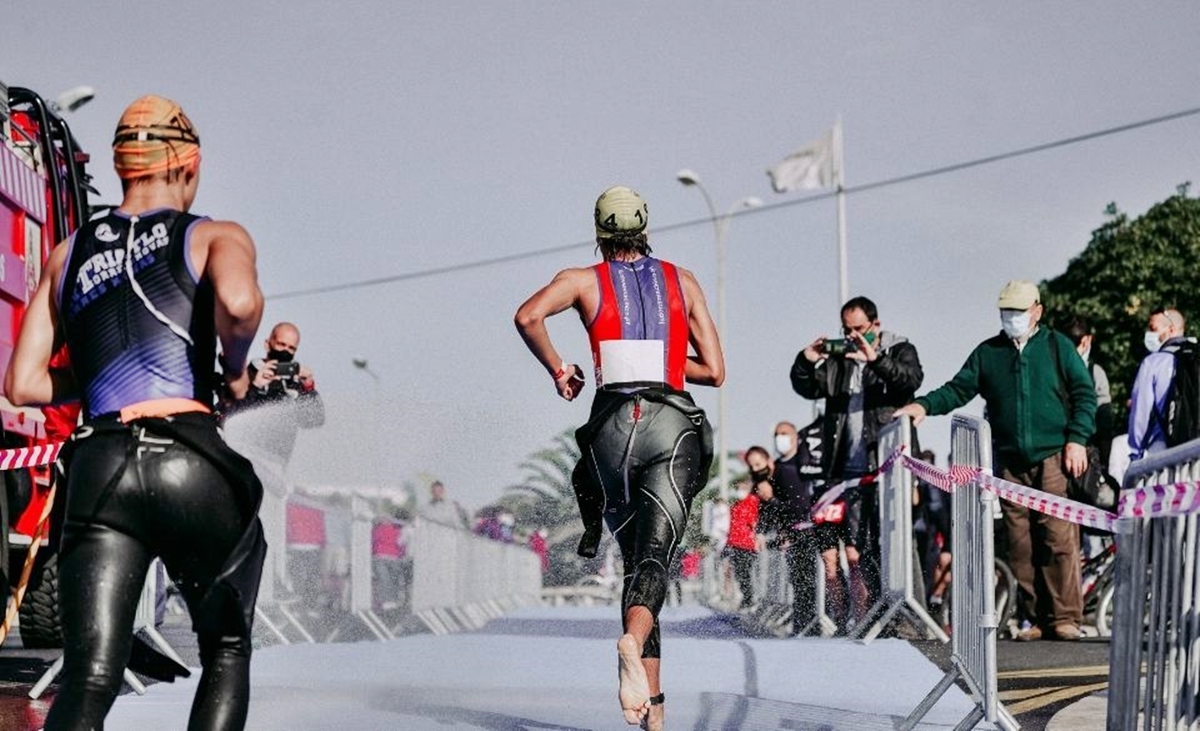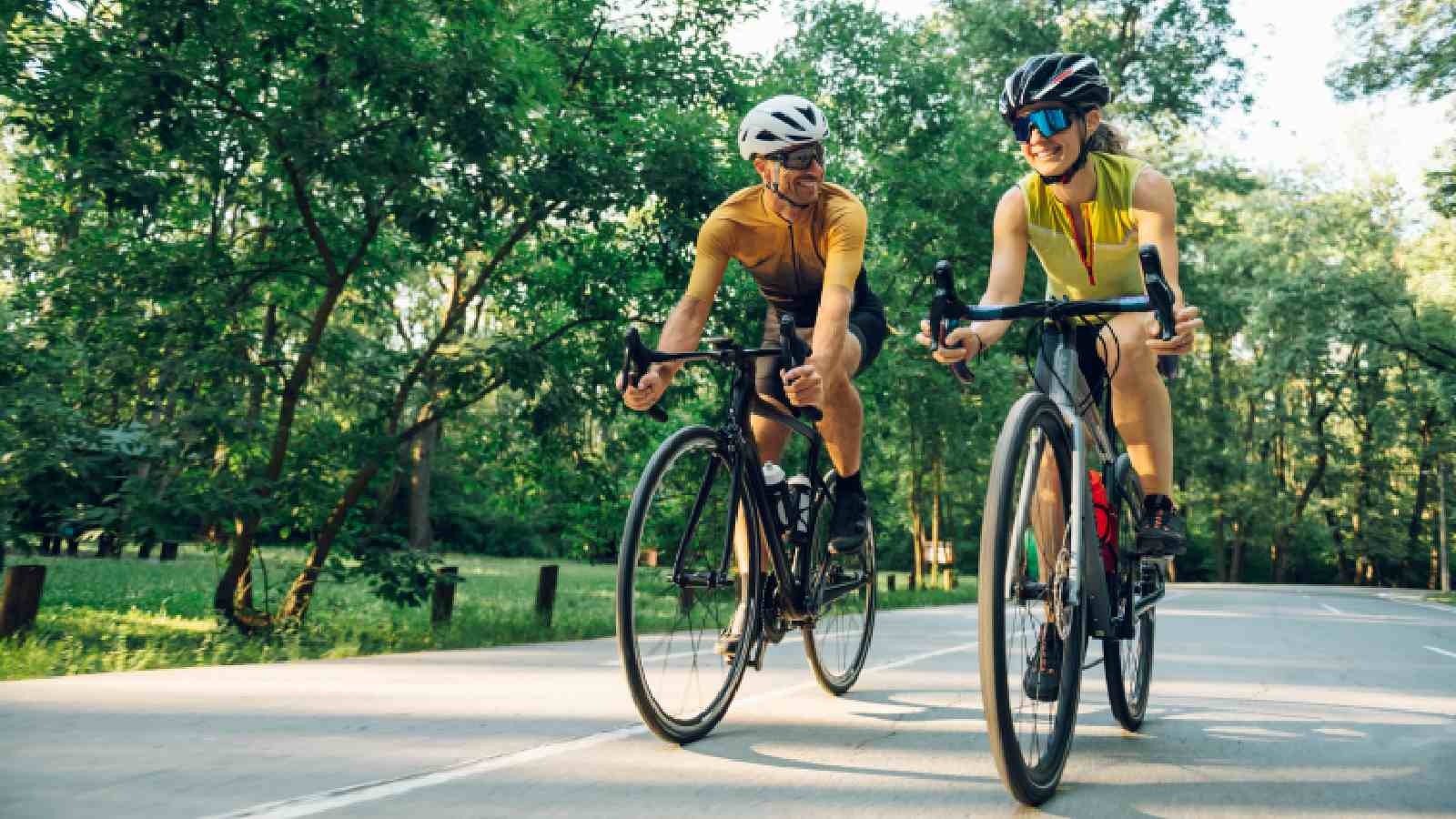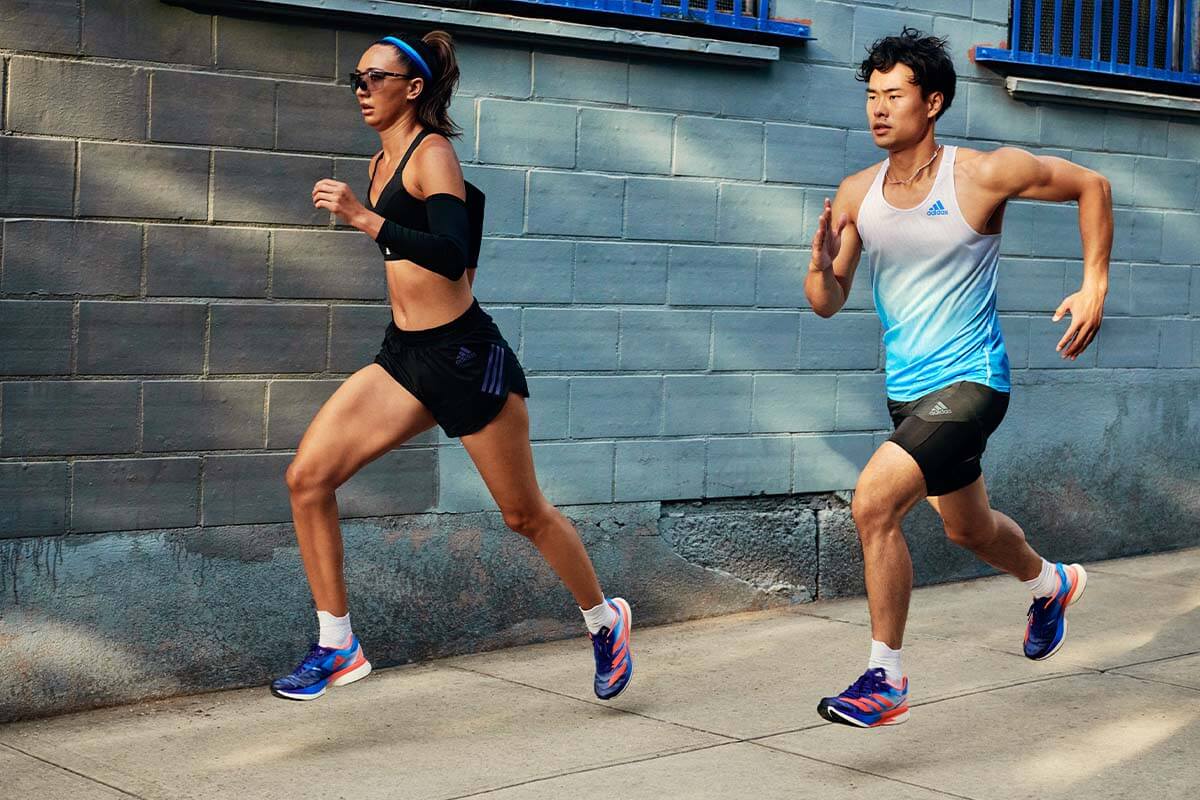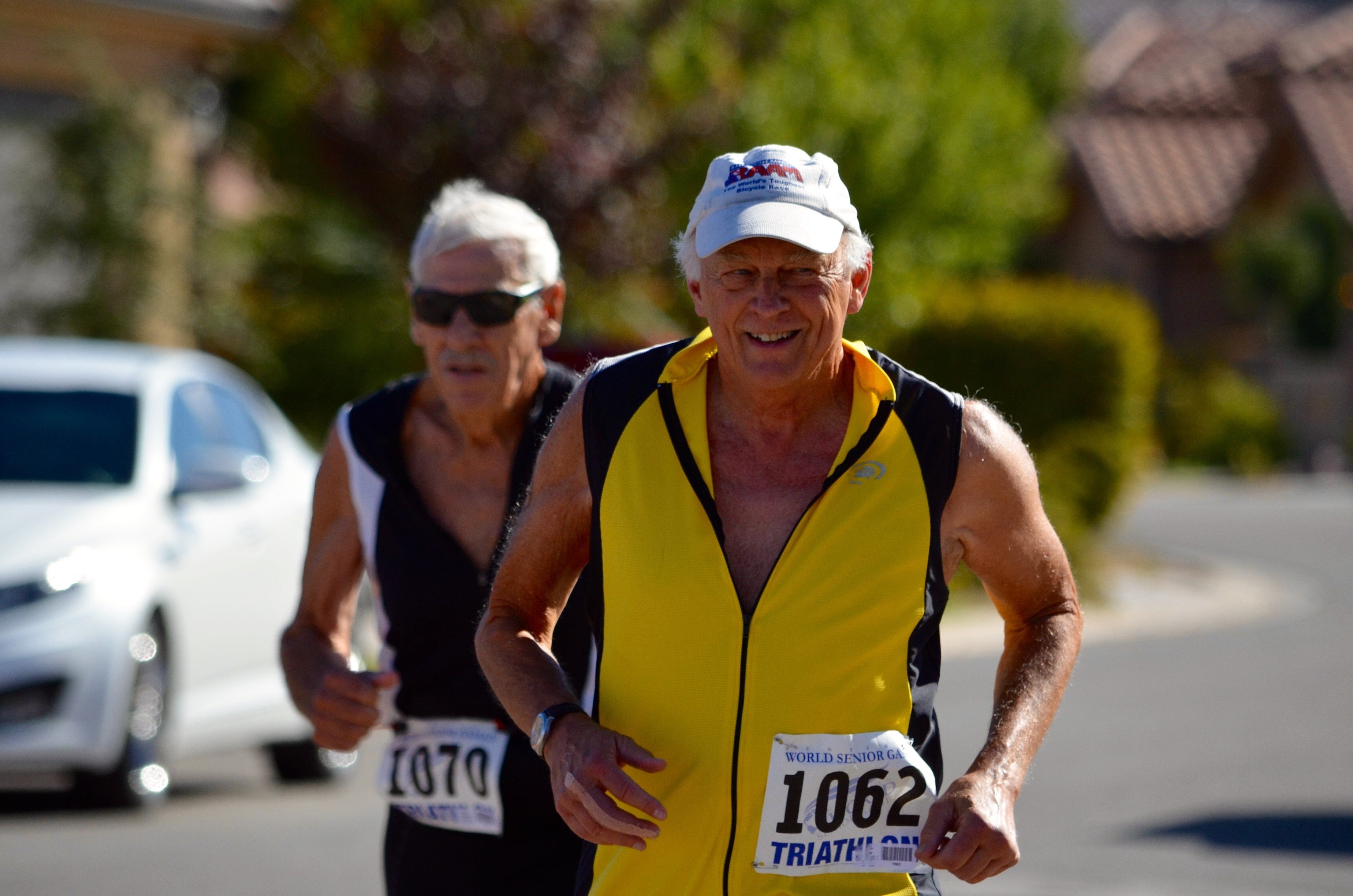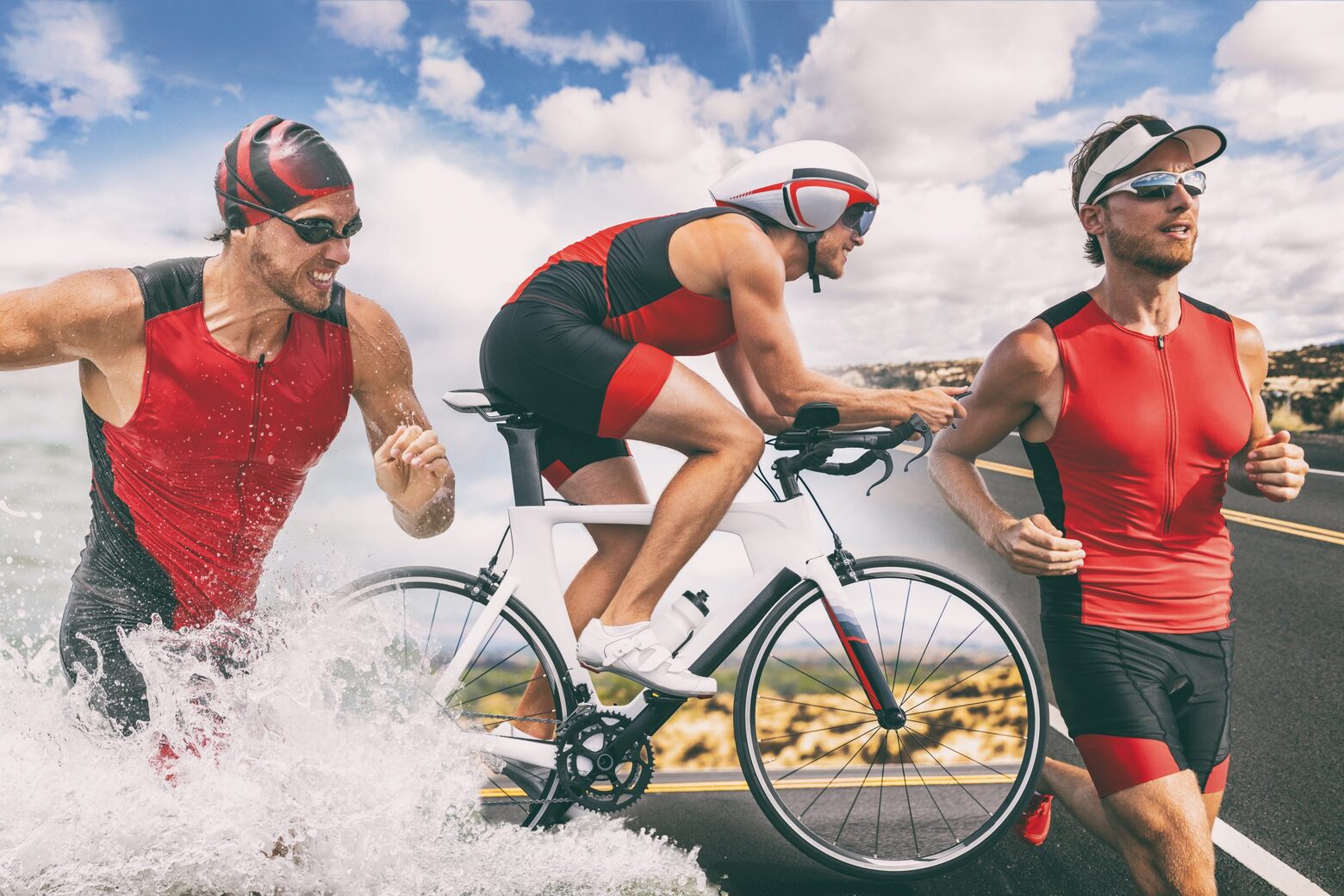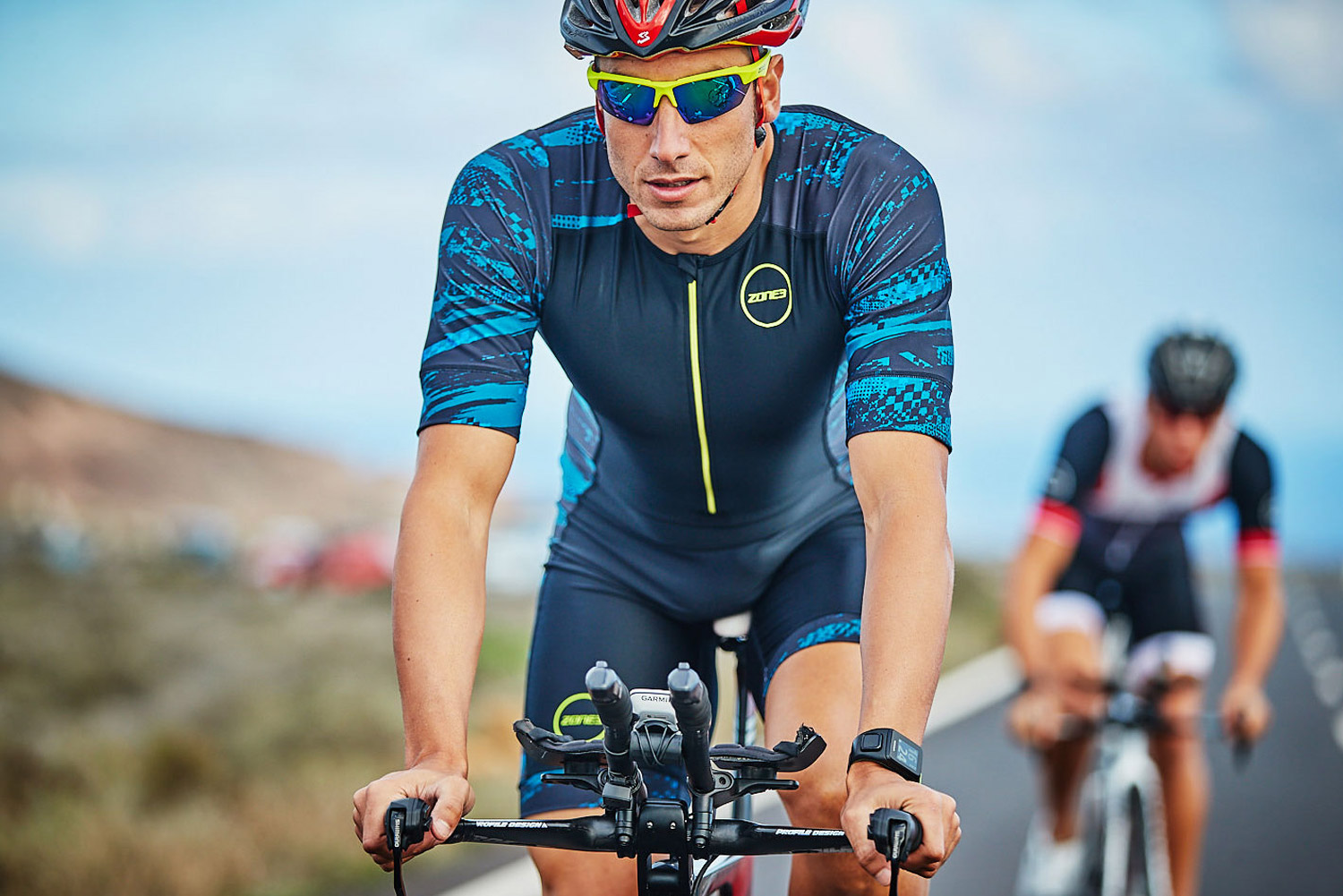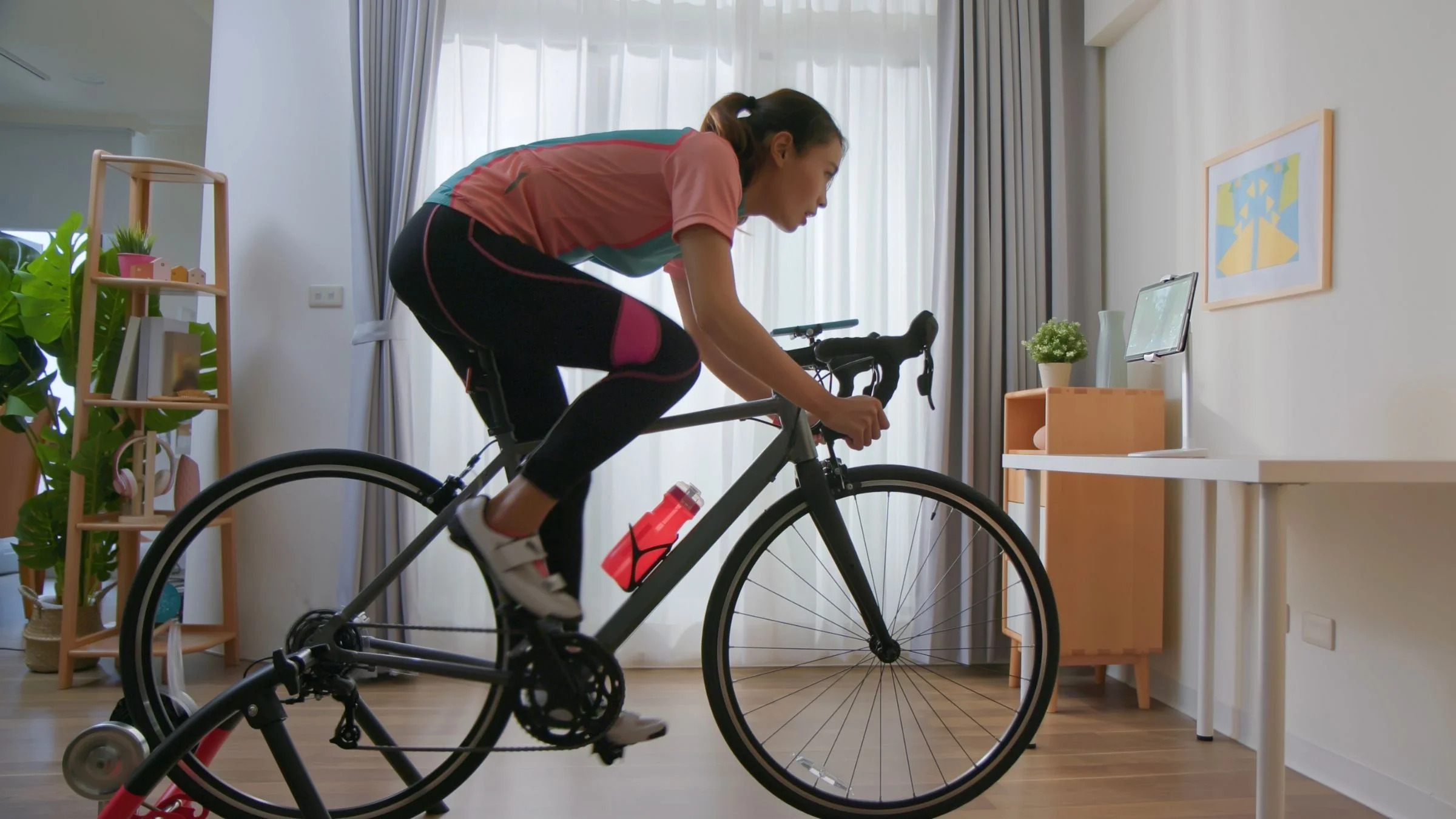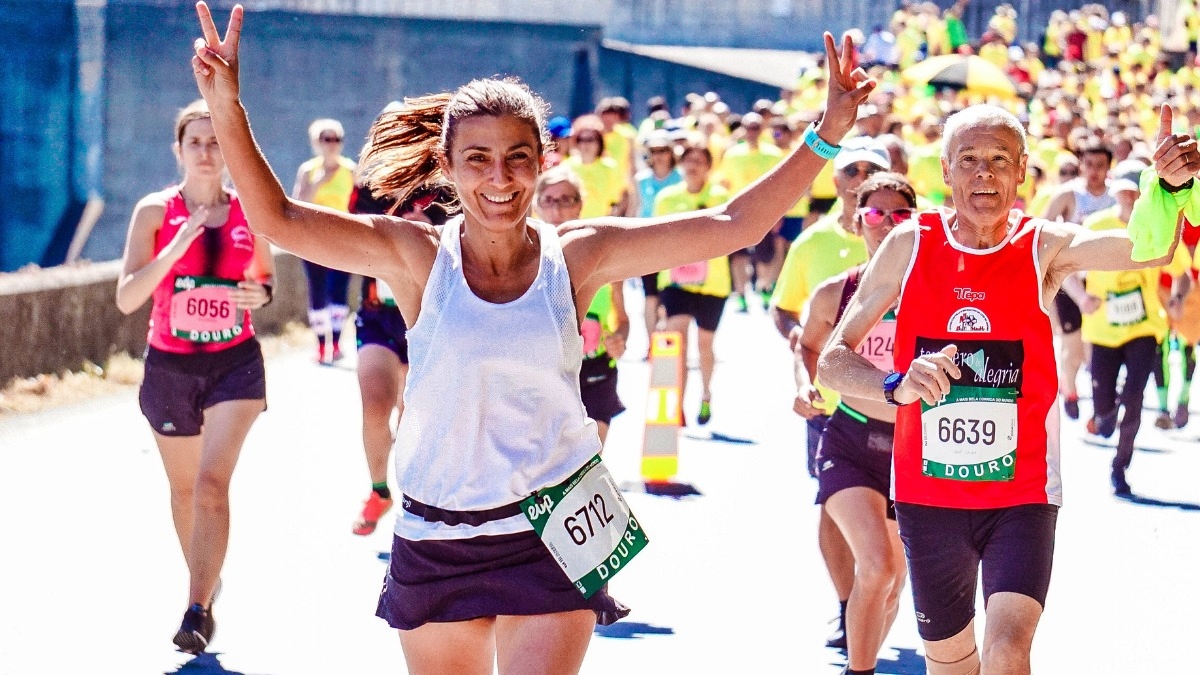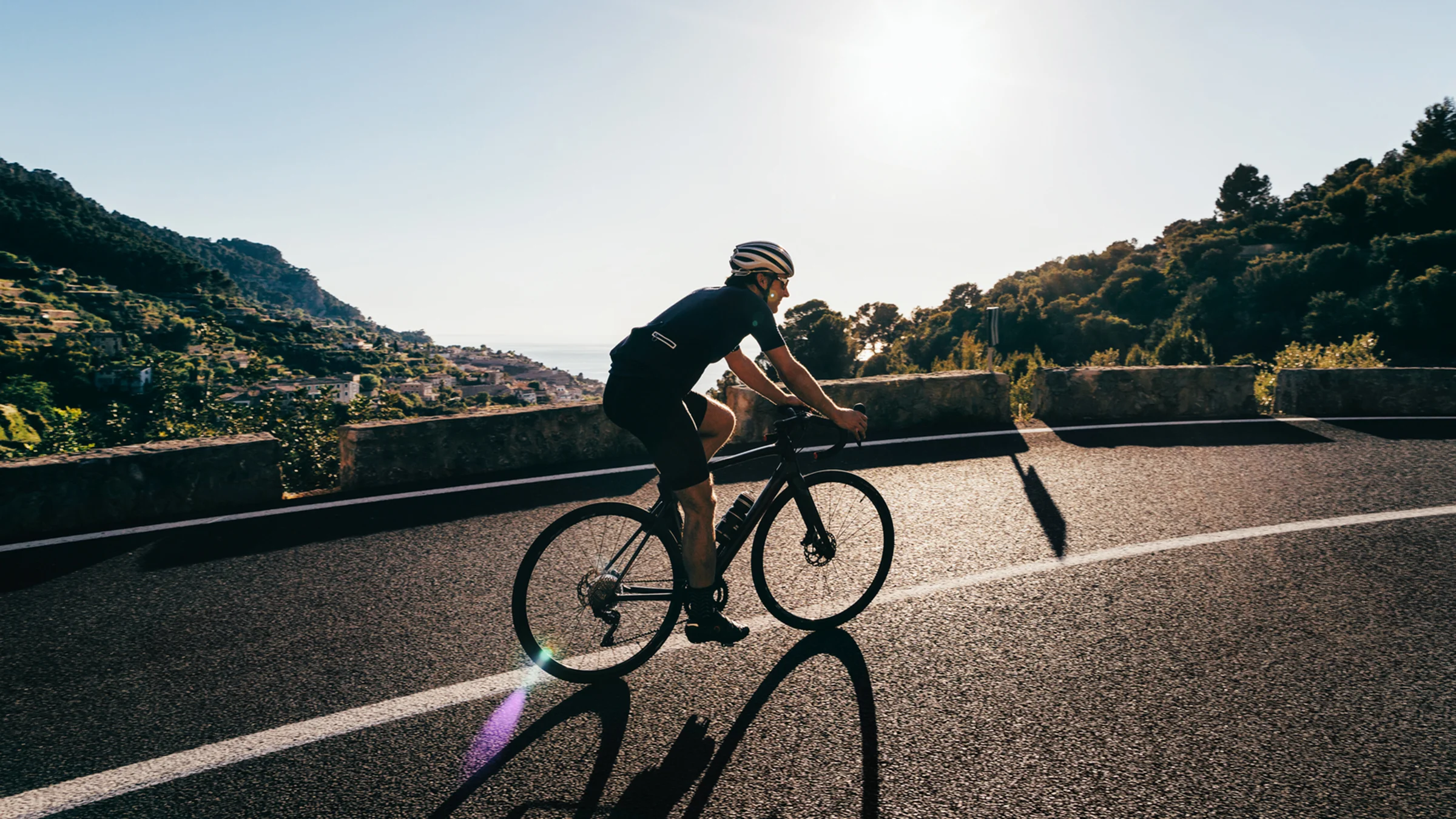

Featured
What Is A Good Pace For Cycling
Modified: August 21, 2023
Discover the ideal cycling pace with our featured guide. Learn what constitutes a good pace for cycling, whether you're a beginner or an experienced rider.
Introduction
When it comes to cycling, finding the right pace is crucial for achieving your fitness goals and enjoying the ride. Whether you’re a beginner or a seasoned cyclist, understanding what constitutes a good pace can help you set realistic expectations and make the most out of your cycling experience.
Cycling pace refers to the speed at which you pedal and cover a certain distance. It is influenced by various factors such as terrain, weather conditions, fitness level, and the type of bike you’re riding. While some cyclists thrive on pushing themselves to ride at high speeds, others prefer a more leisurely pace to savor the scenery.
However, determining what constitutes a good pace can be subjective and vary from person to person. Your fitness level, cycling experience, and individual goals all play a role in defining your ideal pace. In this article, we will explore the factors that affect cycling pace, how to understand and assess your fitness level, setting realistic goals, and tips for pace training.
Before delving into these details, it’s important to note that there is no one-size-fits-all answer to what constitutes a good cycling pace. The key is to find a pace that challenges you while still allowing you to enjoy the ride and avoid burnout.
Now, let’s dive deeper into the factors that can influence your cycling pace and how to find the right pace for your individual needs.
Factors That Affect Cycling Pace
Several factors can significantly impact your cycling pace. It’s essential to understand these factors to better adjust and optimize your performance. Let’s take a closer look at some key influencers:
Terrain: The type of terrain you’re cycling on can have a significant effect on your pace. Riding uphill will naturally slow you down, while flat or downhill stretches will allow you to pick up speed. Gravel or off-road trails may also impact your pace due to the increased resistance and technical challenges they present.
Weather Conditions: Weather can also affect your cycling pace. Headwinds can be particularly challenging, as they create resistance and make it harder to maintain speed. On the other hand, tailwinds can provide a helpful push and improve your overall pace. Additionally, extreme weather conditions like rain, snow, or excessive heat can impact your comfort and performance.
Fitness Level: Your fitness level plays a crucial role in determining your cycling pace. The more you train and improve your cardiovascular endurance and muscle strength, the faster and more efficient you’ll become on the bike. Improving your fitness level can help you maintain a higher pace over longer distances and tackle more challenging routes.
Bike and Equipment: The type of bike and equipment you’re using can also impact your cycling pace. Lightweight and aerodynamic bikes, along with high-quality components, can help reduce resistance and improve speed. Proper bike fit and maintenance are also critical for optimized performance.
Experience and Technique: Cycling experience and technique can affect your pace as well. Skilled cyclists can maintain a more efficient pedal stroke, utilize gears effectively, and navigate turns smoothly, allowing them to maintain a higher average speed. Experience also helps in pacing yourself during long rides and managing energy levels.
Group Dynamics: If you’re cycling in a group, the dynamics of the group can influence your pace. Drafting, or riding closely behind another cyclist to reduce wind resistance, can help improve your speed. On the other hand, riding in a group with varying fitness levels may require adjusting the pace to accommodate everyone’s abilities.
By considering these factors and understanding how they interact, you can better assess and adapt your cycling pace to ensure a more enjoyable and effective ride. In the next section, we will explore how to understand your fitness level and set realistic goals to optimize your cycling performance.
Understanding Your Fitness Level
Understanding your current fitness level is essential for setting realistic goals and determining your optimal cycling pace. It allows you to gauge your capabilities and make informed decisions about training intensity and duration. Here are some key considerations for assessing your fitness level:
Aerobic Capacity: Aerobic capacity refers to your body’s ability to efficiently utilize oxygen during exercise. It is typically measured by your maximum oxygen uptake (VO2 max) and is a good indicator of cardiovascular fitness. You can assess your aerobic capacity through fitness tests, such as a graded exercise test or a lactate threshold test, conducted under the guidance of a professional.
Endurance: Endurance is the ability to sustain prolonged physical activity. It’s an important attribute for long-distance cycling. You can evaluate your endurance by gradually increasing your ride duration and distance. Tracking your progress and noting any improvements will give you an understanding of your current endurance level.
Strength and Power: Cycling requires strength and power in the lower body muscles, particularly the quadriceps, hamstrings, and glutes. Assessing your lower body strength through exercises like squats, lunges, and leg presses can help you gauge your current strength level. Additionally, a power test, such as a maximal effort sprint, can measure your explosive power on the bike.
Recovery Ability: Your ability to recover after intense exercise is crucial for sustaining performance in long rides. Assessing how quickly you recover from training sessions or races can provide insights into your fitness level. Generally, faster recovery times indicate a higher level of fitness.
Rate of Perceived Exertion (RPE): Rate of Perceived Exertion is a subjective measure of how hard you feel you are working during exercise. It can provide valuable information about your fitness level, especially when combined with factors such as heart rate and power output. Monitoring your RPE during training can help you gauge your effort level and adjust your pace accordingly.
Remember that assessing your fitness level is not a one-time task. It’s an ongoing process that requires regularly reevaluating your abilities as you progress in your cycling journey. By understanding your current fitness level, you can set realistic goals and tailor your training to optimize your cycling performance.
Setting Realistic Goals
Setting realistic goals is an important part of any cycling journey. It helps to keep you motivated, focused, and provides a sense of accomplishment as you work towards achieving them. Here are some tips on how to set realistic goals for your cycling:
Identify Your Priorities: Start by identifying what you want to achieve with your cycling. Is it improving your fitness, completing a specific distance or race, or simply enjoying the experience? Understanding your priorities will help you set goals that align with your desires and aspirations.
Be Specific: Set specific and measurable goals. Instead of saying “I want to get faster,” define how much faster and within what timeframe. For example, “I want to increase my average cycling speed by 2 mph within the next three months.”
Make Them Attainable: While it’s great to aim high, it’s crucial to set goals that are realistically attainable. Consider your current fitness level, time availability for training, and any other commitments you may have. Setting overly ambitious goals that are not feasible can lead to frustration and demotivation.
Set Short-term and Long-term Goals: Break down your goals into short-term and long-term targets. Short-term goals provide stepping stones towards your long-term aspirations. They give you a sense of progress and achievement along the way, keeping you motivated and engaged.
Consider External Factors: Take into account external factors that may influence your progress, such as upcoming events, weather patterns, or personal commitments. Adjust your goals accordingly to ensure they are realistic and achievable within the given circumstances.
Track and Adjust: Keep track of your progress to assess if you are on track to achieve your goals. If necessary, don’t be afraid to adjust them based on your evolving performance and circumstances. Flexibility in goal-setting allows you to adapt to challenges and maximize your potential.
Celebrate Milestones: Celebrate every milestone you achieve along the way. Whether it’s completing a specific distance, achieving a personal best, or conquering a challenging route, acknowledge and reward yourself for your accomplishments. Celebrating milestones boosts your motivation and reinforces your commitment to reaching your ultimate goals.
Remember, goal-setting is not just about achieving the end result; it’s about the journey and the personal growth that comes with it. By setting realistic and meaningful goals, you can push your limits, enjoy the process, and ultimately become a better cyclist.
Determining the Right Pace for You
Finding the right pace for your cycling involves a combination of self-assessment, understanding your goals, and adapting to different riding conditions. Here are some key factors to consider when determining the right pace for you:
Individual Fitness Level: Your fitness level plays a significant role in determining your optimal cycling pace. Consider factors such as your aerobic capacity, endurance, and strength. Start by assessing your current fitness level and gradually increase your pace as you become fitter and more comfortable on the bike.
Comfort and Enjoyment: Cycling should be an enjoyable activity. It’s essential to find a pace that allows you to ride comfortably and savor the experience. Pushing yourself too hard or riding at a pace that feels stressful may lead to burnout or diminished enjoyment. Experiment with different speeds and find the pace that feels right for you.
Distance and Duration: The length of your rides and the time you have available for cycling will influence your pace. For shorter rides or time-constrained workouts, you might aim for a faster pace. However, for longer endurance rides, a more moderate and sustainable pace will be more suitable.
Terrain and Conditions: Consider the terrain and environmental conditions you’ll be riding in. Uphill sections, headwinds, or technical surfaces may require adjusting your pace. Adapting to the specific challenges of the route will help you find a pace that allows you to navigate comfortably and maintain a consistent effort.
Goals and Training Objectives: Your goals and training objectives will influence your pace as well. If your aim is to improve speed or participate in races, incorporating interval or high-intensity sessions into your training can help you increase your pace. If you’re focusing on endurance or recreational cycling, a more moderate pace may be appropriate.
Listening to Your Body: Pay attention to how your body feels during rides. If you feel excessively fatigued, experience pain, or notice a significant decline in performance, it may be a sign that you need to adjust your pace. Allow for recovery and listen to your body’s signals to avoid overtraining and injuries.
Remember, the right pace for you may change over time as you progress in your cycling journey. Continuously reassessing and adjusting your pace based on your fitness level, goals, and riding conditions will optimize your performance and enhance your overall cycling experience.
Pace Training Tips
Improving your cycling pace requires deliberate training and focus. Here are some helpful tips to enhance your pace and become a more efficient cyclist:
Interval Training: Incorporate interval training into your workouts. Interval sessions involve alternating between higher intensity efforts and periods of active recovery. This helps improve your cardiovascular fitness, build speed, and increase your lactate threshold.
Hill Repeats: Including hill repeats in your training can boost your strength, power, and climbing ability. Find a challenging hill and perform multiple repeats, focusing on maintaining a steady effort level or increasing intensity with each ascent.
Tempo Rides: Tempo rides involve sustained efforts at a moderately high intensity, usually around 80-85% of your maximum heart rate. These rides improve your endurance and help you sustain a faster pace for longer periods.
Group Rides: Riding in a group can push your pace and provide a competitive environment. Joining group rides allows you to draft, learn from experienced cyclists, and push yourself to keep up with others.
Strength Training: Incorporate strength training exercises into your routine to improve your leg power and overall cycling performance. Focus on exercises that target your lower body, such as squats, lunges, and deadlifts.
Efficient Pedaling Technique: Work on developing a smooth and efficient pedaling technique. This includes maintaining a consistent cadence and avoiding unnecessary movements or excessive pushing with one leg. Efficient pedaling helps conserve energy and can lead to improved speed and endurance.
Brick Workouts: Incorporate brick workouts, where you combine cycling with another discipline such as running or swimming. These workouts improve your ability to transition quickly from one activity to another and can enhance your overall endurance and speed.
Rest and Recovery: Don’t overlook the importance of rest and recovery in pace training. Your body needs time to repair and rebuild after intense workouts. Adequate rest allows for adaptation and prevents overtraining, which can hinder your progress.
Gradual Progression: Progress gradually in your training to avoid injury and burnout. Increase your pace, intensity, or duration in small increments over time rather than making drastic changes all at once.
Remember, consistency is key when it comes to pace training. Stick to your training plan, listen to your body, and monitor your progress. With dedication and perseverance, you can improve your pace and achieve your cycling goals.
The Importance of Rest and Recovery
Rest and recovery are essential components of any training program, including cycling. Properly incorporating rest and recovery into your routine is crucial for optimizing performance, preventing injuries, and ensuring long-term progress. Here’s why rest and recovery are so important:
Repair and Rebuild: During exercise, your muscles undergo micro-tears and experience stress. Rest and recovery periods give your body the opportunity to repair and rebuild these muscles. This process is essential for muscle growth, increased strength, and improved overall performance.
Preventing Overtraining: Overtraining occurs when the body doesn’t have enough time to recover adequately between workouts. This can lead to decreased performance, increased risk of injuries, and mental burnout. Adequate rest allows your body to adapt to the training stimulus and prevent overtraining.
Reducing the Risk of Injuries: Cycling is a repetitive motion sport that puts stress on specific muscle groups and joints. Without proper rest, these areas can become fatigued and more prone to overuse injuries. Regular rest and recovery help to mitigate these risks and promote injury prevention.
Replenishing Energy Stores: Rest and recovery allow your body to replenish glycogen stores and restore depleted energy levels. This ensures that you have adequate energy for future workouts and helps you maintain optimal performance.
Mental Rejuvenation: Rest is not just about physical recovery but also mental rejuvenation. Continuous training without adequate rest can lead to mental fatigue, lack of motivation, and decreased enjoyment of the sport. Taking regular rest days allows you to recharge mentally, maintaining a positive mindset towards cycling.
Improving Performance: It’s a common misconception that training harder and pushing yourself to the limit every day leads to better performance. On the contrary, incorporating rest and recovery into your training program allows your body to adapt to the stress of training and improve performance over time. Recovery periods allow your body to fully absorb the benefits of training, leading to enhanced performance when you return to intense workouts.
Listening to Your Body: Rest and recovery provide an opportunity to listen to your body’s signals and address any warning signs of overtraining or potential injuries. Pay attention to fatigue, unusual or prolonged muscle soreness, decreased performance, or changes in mood. Adjust your training plan accordingly to allow for appropriate rest and recovery.
Remember, rest and recovery are not signs of weakness but rather crucial aspects of a well-rounded training program. Building rest days into your schedule, taking active recovery days, and prioritizing sleep and nutrition will ultimately lead to better performance, increased enjoyment, and long-term sustainability in your cycling journey.
Monitoring and Tracking Your Progress
Monitoring and tracking your progress is essential for assessing your performance, staying motivated, and making informed adjustments to your training. Here are some effective ways to monitor and track your progress as a cyclist:
Keep a Training Journal: Maintain a training journal to record your workouts, including distance, duration, average pace, and perceived effort. By regularly logging your rides, you can track your progress over time and identify patterns or areas for improvement.
Utilize Technology: Take advantage of cycling apps, GPS devices, or cycling computers to track your rides and collect detailed data about your performance. These tools can provide valuable insights such as distance, average speed, elevation gain, heart rate, and power output.
Measurements and Assessments: Periodically assess and measure your physical markers such as body weight, body fat percentage, and waist circumference. While these measurements may not directly reflect cycling performance, they can provide indicators of overall fitness and body composition changes.
Set Benchmark Tests: Incorporate benchmark tests into your training to assess your progress at specific intervals. These tests could include time trials, hill climb challenges, or FTP (Functional Threshold Power) tests. Regularly testing your performance can help you gauge improvements and set new goals.
Utilize Performance Metrics: Analyze performance metrics like average speed, power output, and heart rate to evaluate your progress. Identify trends and patterns in your data, such as increasing average speed or consistent power output during interval sessions.
Check Rate of Perceived Exertion (RPE): Rate of Perceived Exertion is a subjective measure of how hard you feel you are working during exercise. Monitor and compare your RPE during similar rides to assess improvements in perceived effort at the same pace or intensity.
Track Recovery and Rest: Monitoring your rest and recovery is equally important for tracking progress. Document your sleep patterns, changes in energy levels, and feelings of fatigue. This information helps you identify if you’re getting adequate rest and make adjustments to your training plan when necessary.
Compare Event Results: If you participate in organized cycling events or races, compare your results from previous years or similar events. This can give you an indication of improvements in your performance and help you set realistic goals for future events.
Regularly monitoring and tracking your progress not only allows you to see how far you’ve come but also provides valuable insights into your strengths and areas that need improvement. It helps you make data-driven decisions, stay motivated, and adjust your training plan to continue progressing in your cycling journey.
Conclusion
Finding the right pace for cycling is a journey that involves understanding your fitness level, setting realistic goals, and adapting to various factors that affect your performance. By considering factors like terrain, weather conditions, individual fitness level, and personal goals, you can determine the optimal pace that allows you to thrive and enjoy the ride.
Setting realistic goals helps you stay motivated and focused, while pace training techniques like interval workouts, hill repeats, and tempo rides can help you improve your speed and endurance. Incorporating sufficient rest and recovery into your training routine is equally important, as it allows your body to repair and rejuvenate, preventing overtraining and reducing the risk of injuries.
Monitoring and tracking your progress through tools like training journals, technology, benchmark tests, and performance metrics enables you to assess your improvements and make informed adjustments to your training plan. Remember to listen to your body, make necessary adaptations, and celebrate milestones along the way.
Cycling is a dynamic and evolving sport, and finding the right pace is a personal and ever-changing experience. It’s important to enjoy the process, savor the ride, and embrace the growth and challenges that come with it. So, hop on your bike, find your rhythm, and let the wind guide you towards your cycling goals.
